“The Color Purple” Hair Department Head Lawrence Davis on Capturing Iconic Characters in Flux
Director Blitz Bazawule’s The Color Purple, which builds on the legacy of Alice Walker’s original 1982 novel, Steven Spielberg’s 1985 drama, and the more recent Broadway musical, had the second-highest domestic opening of all time for a film released on Christmas day.
Celebrating resilience in the face of trauma, racism, and tragedy, The Color Purple follows Celie Harris (Fantasia Barrino), a woman who faces many years of difficulty in her search for belonging and happiness. First, Celie and her sister Nettie (Ciara) struggle through a violent childhood. Then after being raped repeatedly by her father, he removes Celie’s two resulting children, forcing her to marry local farmer Mister (Colman Domingo). When Mister tries to molest Nettie, she leaves and travels to Africa, but the years of letters she writes to Celie are intercepted by Mister and never reach her. The story spans decades in which Celie must learn to find her own power, in part through her relationship with headstrong jazz singer Shug Avery (Tara P. Henson) and by seeing female family and friends, for better or worse, stand up to their oppressors.
Hair Department Head Lawrence Davis played an integral part in bringing this musical reimagining of The Color Purple to life. The Credits spoke to Davis about his role as a collaborator with Bazawule in bringing this new spin on a classic story to a whole new audience. Maintaining the authenticity of the eras represented and capturing the specificity of characters known by fans as far back as 1982 was, for him, most important and top of mind.
In this new iteration of The Color Purple, we see Celie’s character arc in part through her hairstyles.
Absolutely. We see an evolution. Celie’s character starts with a very troubled childhood, being abused and a single parent at an early age, to an elegant entrepreneur at the end of the movie, and that is expressed in her look from head to toe.
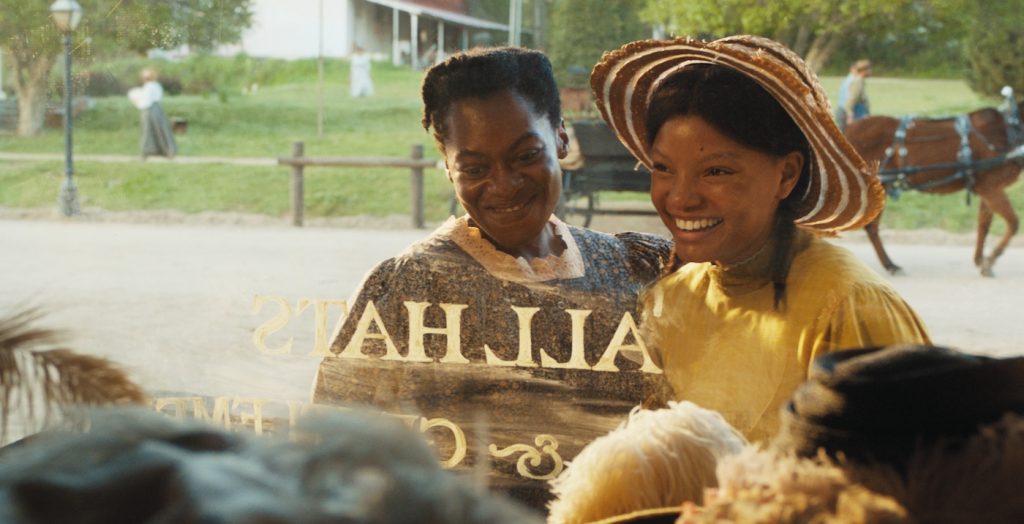
What were some of the beats you used to make those shifts?
First, she starts out as a little girl with the plaits; then, she becomes a more mature woman who is sure of herself after she frees herself from Mister. She develops into a woman who grooms herself and takes pride in her looks. One of the big shifts comes when she is complimented by Shug Avery (Taraji P. Henson). It takes Shug’s friendship and their relationship to bring her out of her shell. She takes her power back, and you see that in her attire, the makeup she starts applying, and, of course, in her hair.
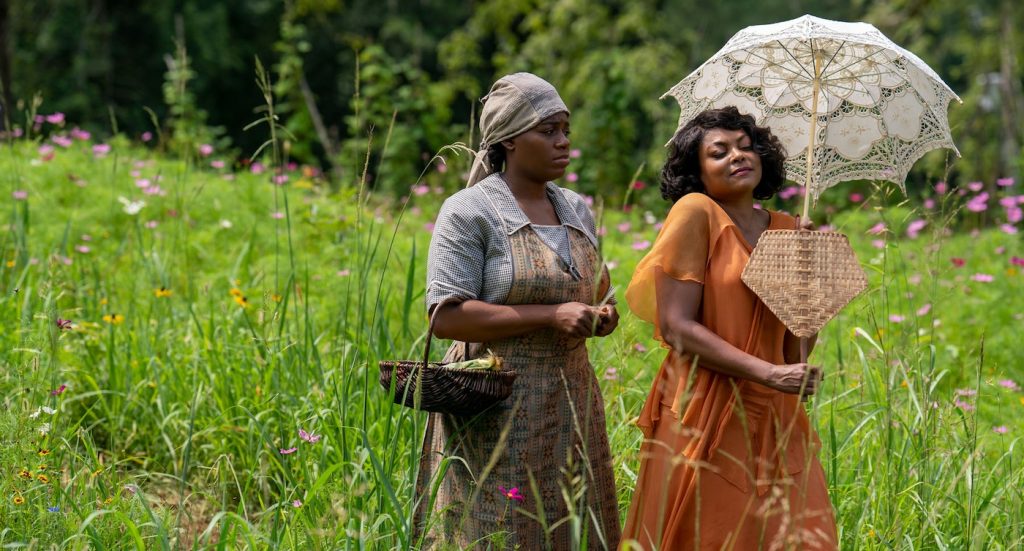
The fantasy where she sings with Shug is definitely a high point in terms of her style.
Yes. In the scene when she has her fantasy with Shug, coming down the stairs with the orchestra playing, that’s when we see her in straighter hair, weighed and curled. It’s something we hadn’t seen in the original movie or in the play. For that, I wanted to tap into styles in classic films. I especially looked at Lena Horne in Swing Fever from 1943. Celie is a designer, and she definitely has that sense of style. It’s not where we, as the audience, might see Celie, but her imagination takes her there.
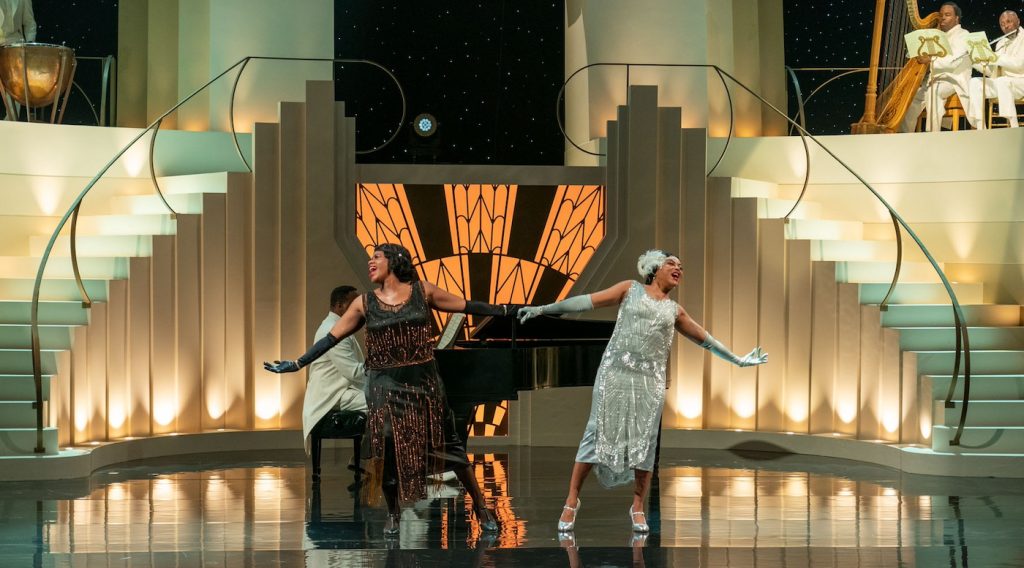
Can you talk about the specifics of your choices and what you did with Celie’s hair during that number?
Once we got her in the chair and I had seen what the dress and the headpiece were, I knew she had to be this beautiful, glamorous flapper and knew exactly what hairdo I wanted to do. I took the original kinky wig, and I pressed it out with a pressing comb, then I just curled that hair into figure-eight curls all over and brushed that hair out. Then I put finger waves in it, sculpted them, and froze them in place.
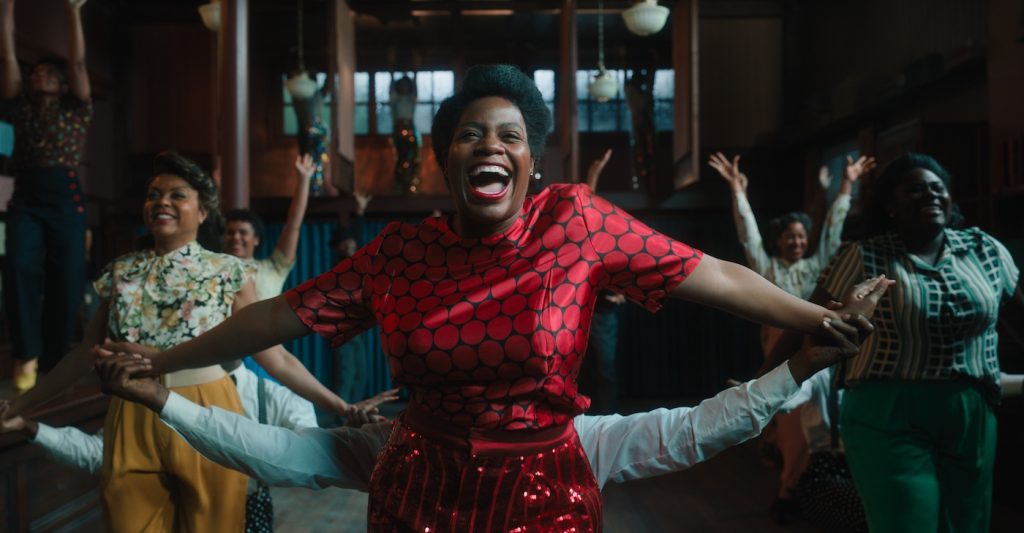
The last scene in the film is Celie as a grandmother, and she has a very classic style.
At the end of the movie, It’s the 1940s, and she has this beautiful era-appropriate updo. I wanted a controlled look, but I didn’t want to go too straight with it because they were at a Sunday picnic in Georgia, so I put a snood on Celie’s hair in the back. I wanted a controlled look to give her a sense of having it all together.
The choreography in the jukejoint had to be a concern when designing the hair for that scene. How does that impact your choices?
Anytime you have dancers, you have to figure out how to keep their look consistent throughout the scene. I need something that’s not going to move but is period-appropriate, something I can actually anchor pins and hats into because they’re going to be dancing and get flipped upside down. I want nothing to fly off. Our method is we have wig caps, and we pin the wig down, of course, but then we also pin the hat into the wig and the wig cap. It’s tedious, but it’s the way to create a strong anchor. Even with the men, to keep their hats on, we have pantyhose under their hats that we tie around the head, pull really tight, and anchor the hats into the hose so they don’t come off. It’s a little strategic thing to do that we’ve mastered.
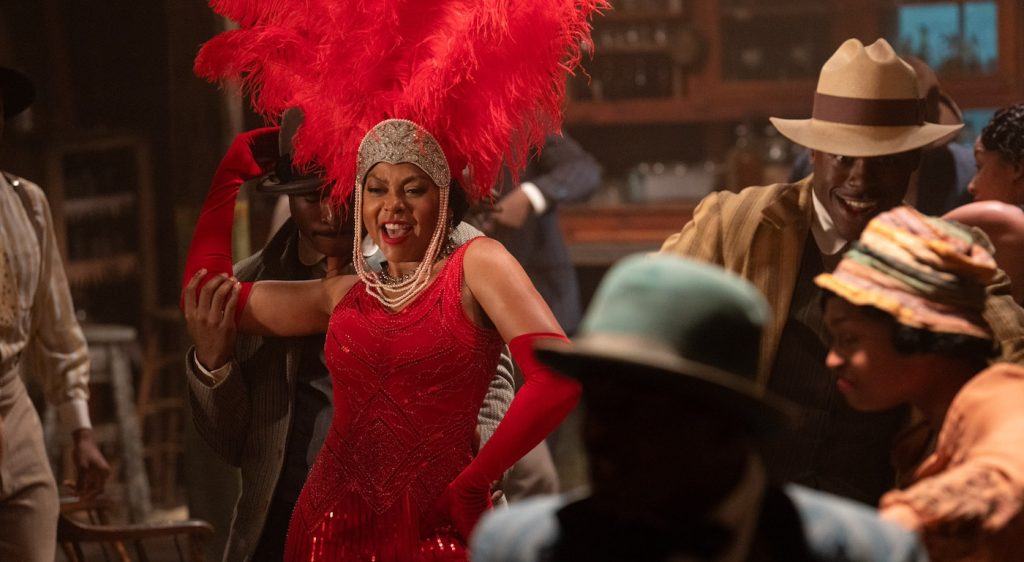
What was an example of something that required a lot of trial and error in terms of getting the hair right?
One challenge was finding the right look for Danielle Brooks as Sofia when she was coming out of jail. She hasn’t been groomed in a while, and it’s been eight years. We wanted to add some gray, but not too much. We went back and forth on it because people gray differently or faster. Did being in jail give her more gray? It had to look natural, of course, and there were different lighting situations that would make it look different, so we tested it in natural light, inside, and in lots of other environments to get it just right.
The scenes in Africa use a lot of traditional tribal dress and had to have hair designs appropriate to the tribes represented. How did you proceed?
Blitz was instrumental in that because he’s from Africa, so he schooled us because we did not know. The problem was, though, that a good 50% of the people sent from casting had dreadlocks, and that’s not what they wore. We sent a message letting casting know that dreads are not what Africans wore, but we also worked on the problem. We had to strategically take those who had dreads and condense them as close to the head as possible. And then we took packaged hair in kinky form and created what was pretty much a hair hat over the dreads. It was one very time-consuming because Blitz wanted to have an authenticity reflecting the look of the tribes. Then, for a lot of folks, we had a headpiece on top of that as well. It was definitely one of the hardest and the most transformative things we did in the film. I think we used about a million pins.
There are still so few people who know how to handle hair for people of color in Hollywood. What do you think needs to be done in terms of making sure all performers get taken care of in the chair?
I think there should be a revamp of the basic cosmetology book. It doesn’t give enough information on ethnic hair. It doesn’t give us enough information on naturally curly hair, whether it’s a person of color or not. Curly hair needs to be taken care of a certain way. I also think that my union should offer more courses on natural hair. I saw a video today of an interview with Diahann Carroll from 1968, saying she was going to do a movie, and she asked the producer/director if someone could handle her hair when they were on location. He said, “What do you mean?” She said, “I’m going to be working in the elements, and my hair is going to swell. Can you have somebody there for me who can handle kinky hair?” He said he would, and of course, when they got there, the stylist, who was supposedly the best in the business, could not do her hair. So it’s been an issue for years and years, and I still think it’s an issue. That needs to change.
The Color Purple is in theaters nationwide.
For more on The Color Purple, check out these stories:
“The Color Purple” Makeup Department Head Carol Rasheed Finds Music in Many Shades
“The Color Purple” Editor Jon Poll on Finding the Rhythm of This Moving Adaptation
Featured image: PHYLICIA PEARL MPASI as Young Celie in Warner Bros. Pictures’ bold new take on a classic, “THE COLOR PURPLE,” a Warner Bros. Pictures release. Photo Credit: Courtesy Warner Bros. Pictures



